A Landscape with Pumpkins — Yayoi Kusama, Naoshima, and the Power of Art
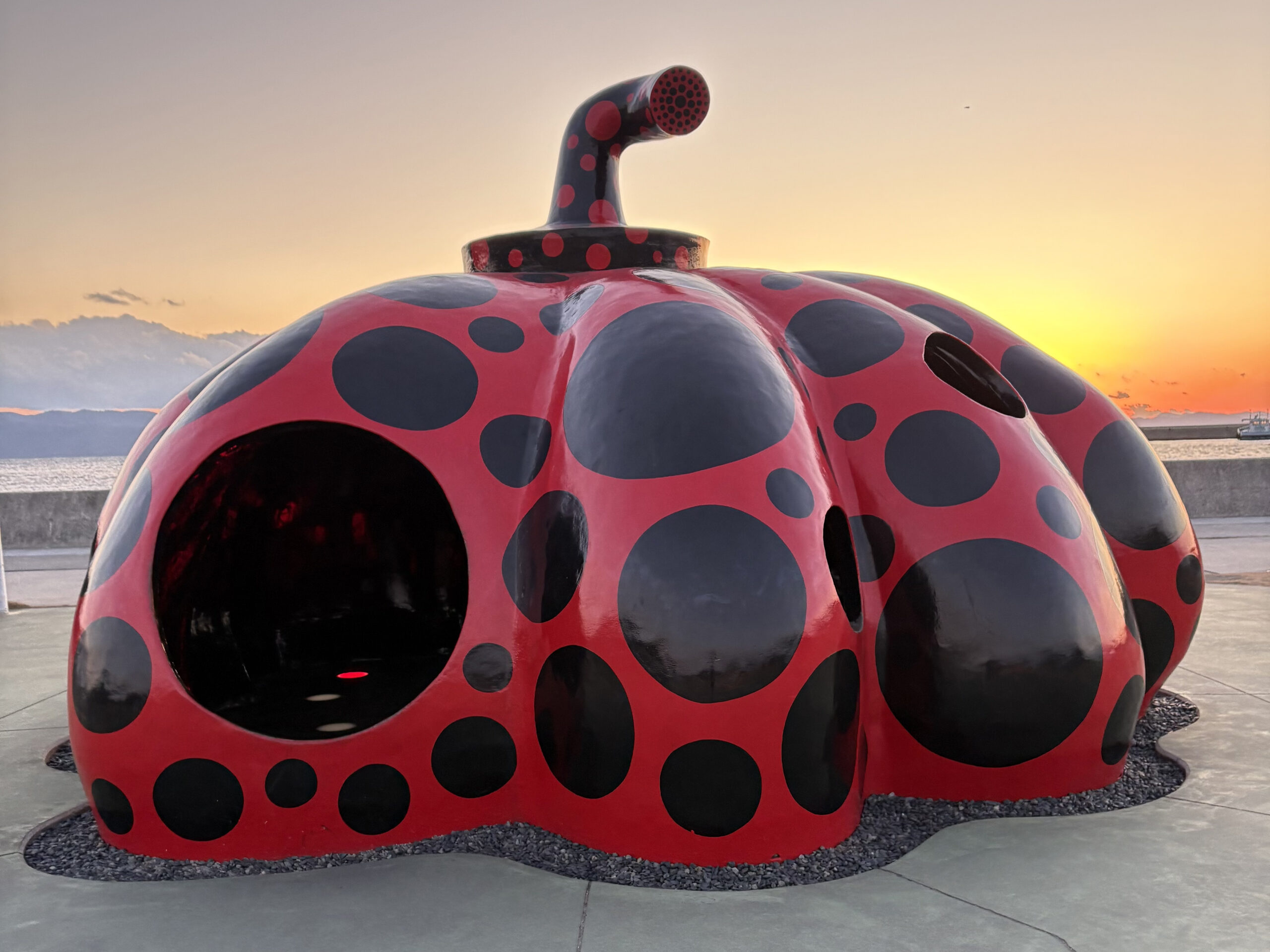
When the Ferry Arrives, the First Thing You See is That Red Pumpkin
As your ferry approaches the port, a vivid red shape comes into view. Covered in bold black polka dots, its soft, bulbous form is unmistakable.It’s Red Pumpkin, the now-iconic outdoor sculpture by Yayoi Kusama.
Welcome to Naoshima—an island in Japan’s Seto Inland Sea that has become a sanctuary for contemporary art lovers from around the world.Situated at the island’s main gateway, Red Pumpkin is more than just a landmark.
It’s a playful but powerful invitation into a world where art blends seamlessly with nature, architecture, and local life.Visitors can actually step inside the sculpture, experiencing the artwork from within.
Through the dotted apertures carved into its shell, the surrounding scenery appears slightly distorted—framed by Kusama’s hallucination-inspired patterns.
It’s both whimsical and disorienting, capturing a glimpse of the surreal world through the artist’s eyes.
Why Pumpkins? Yayoi Kusama’s Beloved Motif
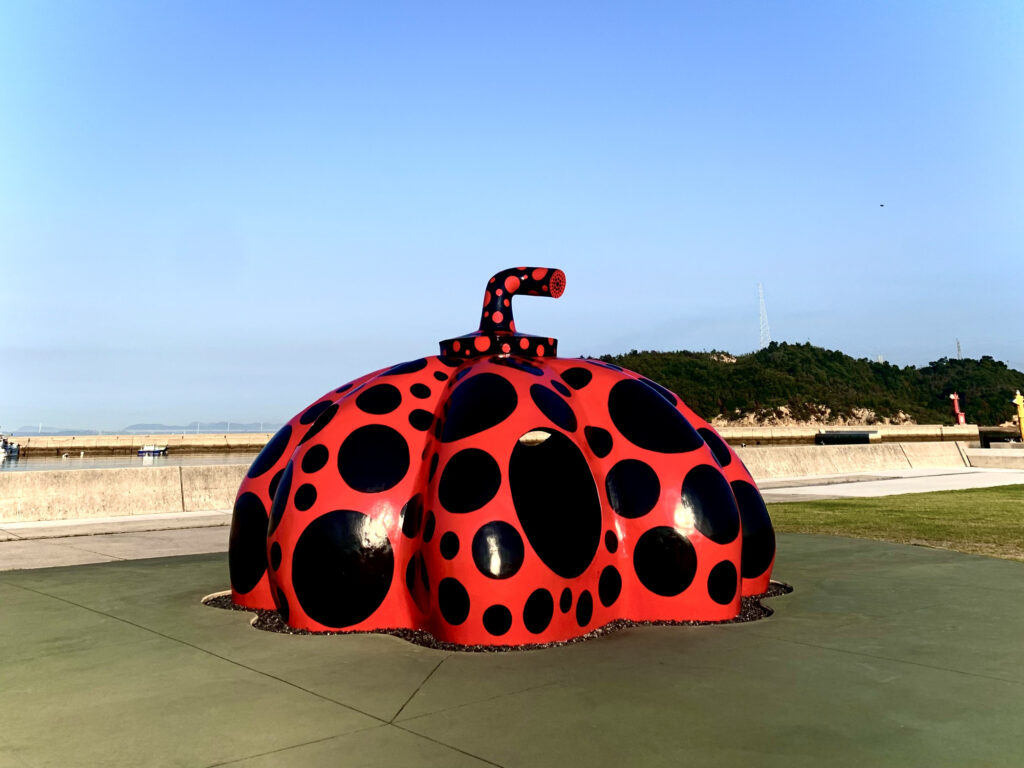
Yayoi Kusama is one of the most influential contemporary artists of our time, known for her signature use of repetition, vibrant colors, and immersive environments.
Her work explores themes like infinity, obsession, and self-obliteration—all stemming from her deeply personal experiences with hallucinations and mental health.
Among her many recurring motifs, the pumpkin holds a special place.
For Kusama, it’s not just a vegetable—it’s a form of comfort and nostalgia.
“Pumpkins speak to me,” she once said in an interview.
“They embody a sense of stability and peace of mind.”
Her dotted pumpkins, often enlarged to monumental scale, radiate a gentle humor while retaining a kind of metaphysical weight.
They invite us to contemplate the cosmos through the humble lens of a garden vegetable—transformed by obsession and imagination.
Yellow by the Sea: A Symbol of Stillness

Naoshima is home to two of Kusama’s pumpkin sculptures.
While Red Pumpkin welcomes travelers at the port, Yellow Pumpkin rests quietly on the opposite end of the island, perched at the end of an old pier near Benesse House Museum.
Unveiled in 1994, Yellow Pumpkin has become one of the most photographed—and quietly revered—public artworks in Japan.
Its simple presence against the backdrop of sea and sky is breathtaking.
At sunset, the sculpture’s silhouette softens, bathed in golden light as the horizon glows.
Visitors stop, not to merely take pictures, but to reflect, to breathe, and to experience the harmony between art and environment.
The Island as a Stage for Art
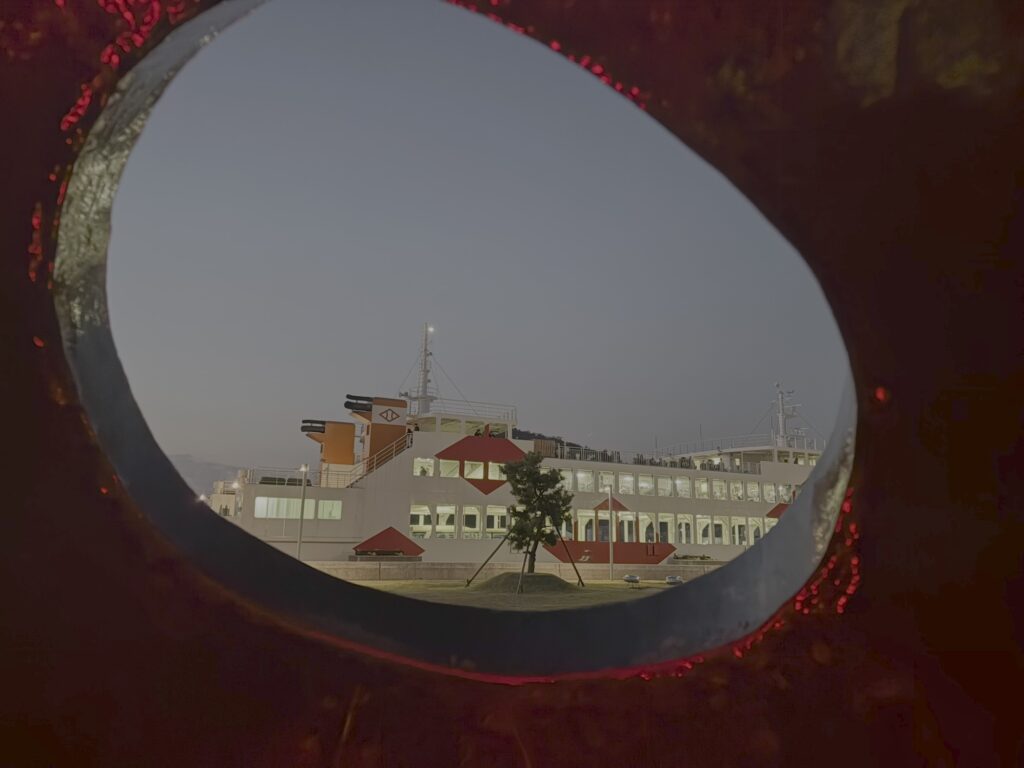
Naoshima’s rise as an art destination began in the late 1980s, when Benesse Corporation and architect Tadao Ando launched a pioneering project to revitalize the island through culture.
Their vision was not to isolate art inside museums but to integrate it into everyday life—buildings, homes, coastlines.
Kusama’s pumpkins were a natural fit for this philosophy.
By placing her surreal yet playful forms in open-air spaces, they became both part of the landscape and something that subtly transformed it.
They are not there to be stared at from a distance—they are meant to be lived with.
Weathered by salt, wind, and time, they’ve taken on layers of meaning, shaped by the memories of countless visitors and locals alike.
Art as Part of Everyday Life
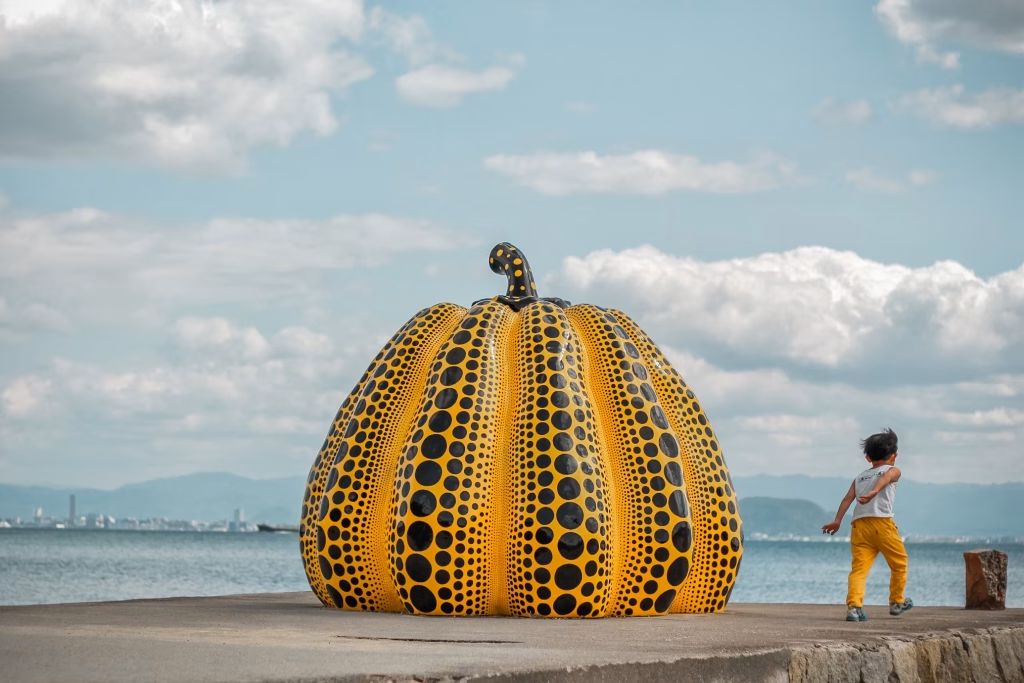
Wander through Naoshima, and you’ll find art tucked into corners of everyday life.
Traditional homes turned into immersive installations. Sculptures nestled among wildflowers.
Museums embedded into the earth itself.
And then, of course, the pumpkins—standing quietly but unmistakably.
They don’t shout for attention. They simply are.
And that quiet presence, so rooted in the here and now, is perhaps what makes them unforgettable.
In Conclusion
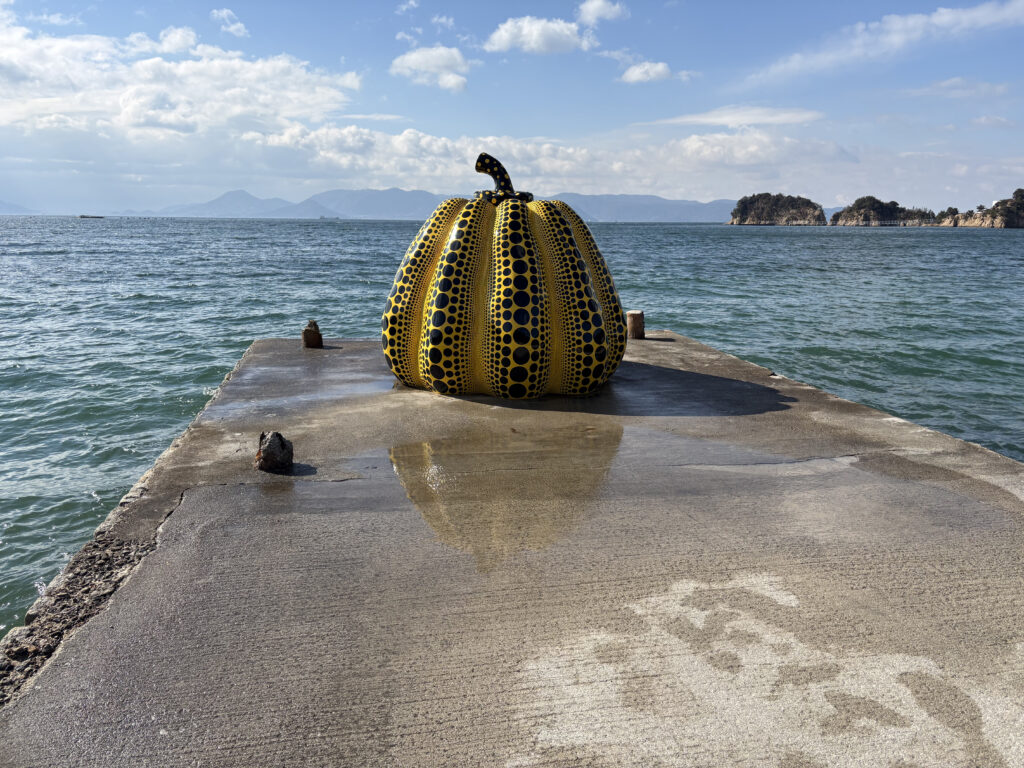
For Yayoi Kusama, pumpkins are more than just a signature.
They are a window into her world: playful, repetitive, strangely comforting, and deeply personal.
On Naoshima, her red and yellow pumpkins have become not just artworks, but living parts of the island’s soul.
Together, Kusama and Naoshima have shown that art doesn’t need to be locked away in galleries to be profound.
It can sit by the sea, fade in the rain, glow in the sunset—and still move us, perhaps more than ever.
The next time you find yourself on this small island in the Seto Inland Sea, take a moment beside the pumpkins.
Let the wind blow.
Let the sea speak.
You might find that art, in its purest form, is not something you observe—but something you simply live with.
About Our Tour called “Finding Naoshima Tour”
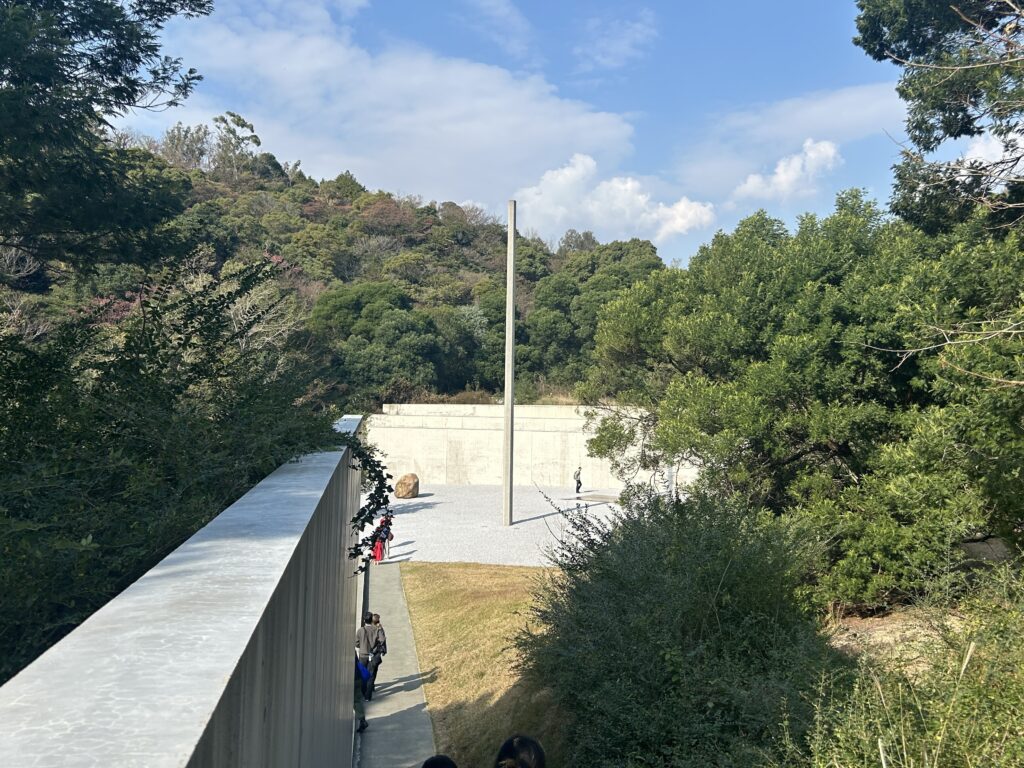
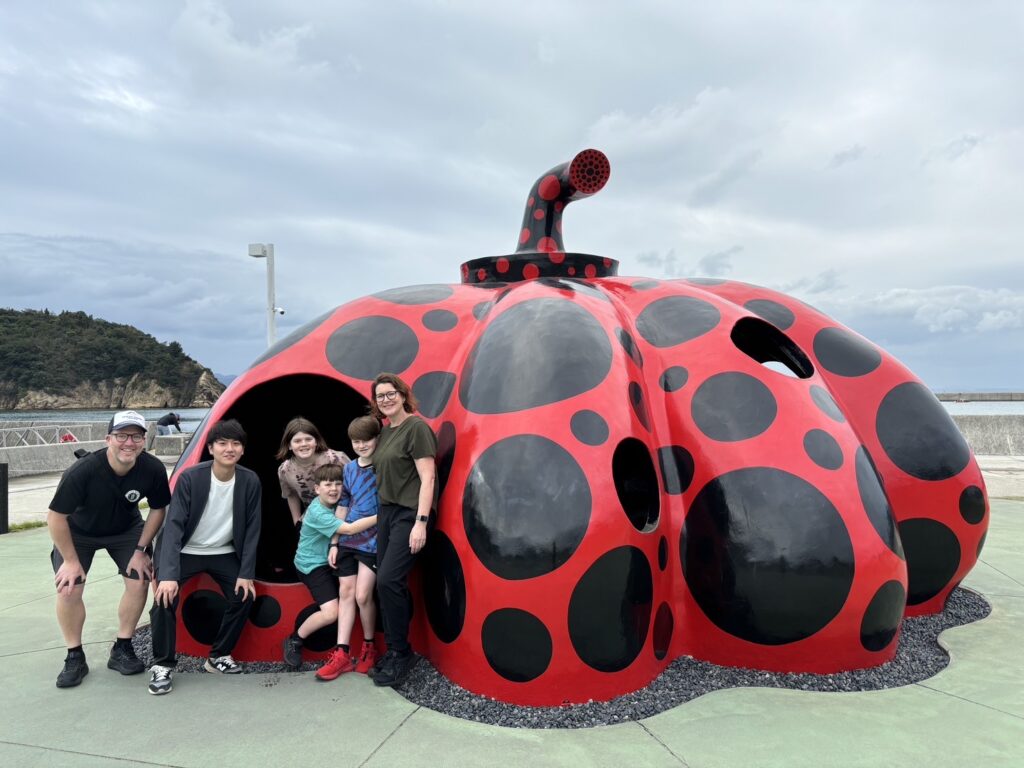
We also offer guided tours of Naoshima called “Finding Naoshima Tour”, a private tour service led by locals born and raised on Naoshima.
With deep roots in the island, we share Naoshima’s unique history, rich culture, and breathtaking scenery from a local perspective.
Whether it’s hidden photo spots, stories behind the artworks, or the charm of island life, we guide you through it all.
Each tour is fully private, allowing for a personalized and relaxed experience at your own pace.
Let us show you the real Naoshima—beyond the museums and into its heart.
